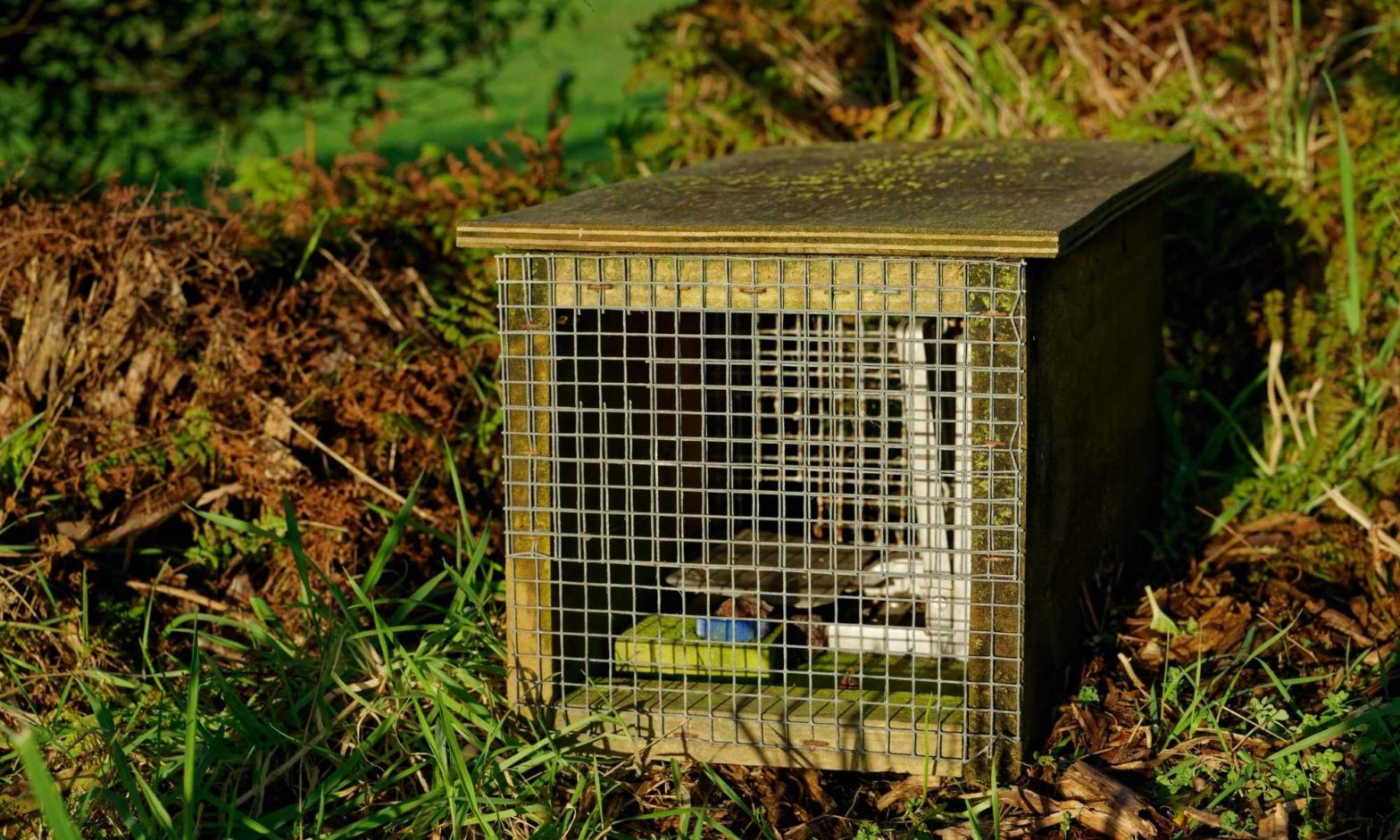Kia Ora trappers,
We are in the midst of bird breeding season, and stoat young are starting to leave the nest and explore the outside world. From local feedback, it would seem the possum population numbers are well down compared to what they have been, and rats seem to be under a strict thumb too. This is great news for our birds but we can’t become complacent.
If you have any updated catch numbers, now is a great time to send them through to pestcontrol@tewairoa.org.nz.
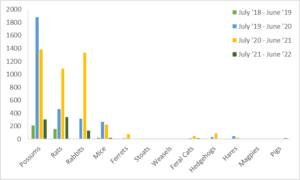
During our first ever lockdown, local trapper (now committee member) Julia sent me an email saying she was on a mission to catch one pest for each day in lockdown. I checked in on how she was doing this time around, only to find she has been hitting pests so hard in the past year and a half that she had very little to report! We are really happy with these results, but encourage property owners to remain vigilant as there is constant reinvasion pressure from property boundaries, and likely a small remnant population of trap and bait-shy animals.
Below is a mixture of tips and tricks both from Auckland Council recommendations and suggestions from members of the Friends of Te Wairoa pest control project. There is no one correct way to control pests. They are intelligent and learn to be wary, passing these behaviours to others. This means it is important that we constantly change our mode of attack, so that they are caught unawares, literally!
Always wear gloves when handling dead animals – many animals can carry leptospirosis.
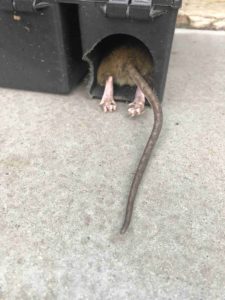
Rats & Mice:
Placement:
- Set up bait lines 100m apart, with stations or traps every 50m along the line. Use 25m spacings on boundaries (except where neighbours are also trapping). Alternatively, set 2 bait stations per hectare
- Place traps near a waterway or along a fence line/retaining wall. Rodents like to be able to run between areas using ‘shelter’ rather than being in the open.
- Consider the convenience of checking and maintaining gear when placing it, e.g. along existing paths and tracks
- Place traps considering exclusion from children, stock and flood levels
- Number traps to avoid missing one when checking. This also helps to collate data relevant to each site over time.
Lure:
- Peanut butter or Nutella. Can be mixed with kibbled wheat or oats.
- Using a lighter, melt a small piece of cheese to the trigger mechanism (except if plastic)
- Small piece of dog treat jerky, or white chocolate
Tips:
- Ensure traps are stable so they don’t scare off an investigating animal
- Attach traps to a board for areas difficult to access e.g. under a house or in a ceiling. This also prevents an animal running away with the trap
- Build a tunnel around rat traps to make them more attractive e.g. board base with rigid plastic stapled tunnel-fashion on top, or cut old nail containers into a tunnel shape.
- Attach wax bait blocks with a nail to fenceposts, with a half milk bottle on top to protect it from the weather. Alternatively place a length of wood with a nail inside a juice bottle with the ends cut off.
- If you don’t have enough bait stations, use an ice-cream container. Cut a C-shaped hole in the edge of the tub for an entry hole. You may need to fashion an awning to prevent rain getting in as the bait will spoil.
- If snails and slugs are getting to the bait, sprinkle some slug bait in the bait station.
- Place bait inside a bread bag and secure with a knot. Jam the knot between the floor of the bait station and the housing. This will keep the bait active longer and force the animal to ingest some bait as it breaks into the bag. Smear some lure on the bag to increase attraction.
- Legally, bait must be placed in bait stations and not on the ground (requires a Controlled Substances License and approval from a local Medical Officer of Health).
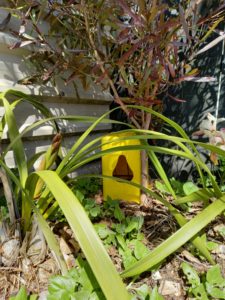
Possums:
Placement:
- One trap per hectare. Bait line setup similar to rodents.
- Place traps and bait stations at the base of an attractive tree or in a grove of trees e.g. an orchard, a large palm or large natives
- Near waterways that possums may drink from, or a path that they might use e.g. fence line, farm track
Lure:
- A cut apple or carrot with cinnamon rubbed on the cut side
- Feijoas, citrus peel or other fruit they are enjoying
- Cut a cube of polystyrene and spread it with vegemite, peanut butter or jam. This will last longer than an apple.
- Mix icing sugar and white flour, 1:4, with a cinnamon, curry powder or aniseed. To lure possums to the trap sprinkle a handful outside the trap, or add water to create a paste to smear up a tree to the entrance of the trap.
Tips:
- Attach traps to a board for elevation from pets and ease of relocation rather than attaching directly to a tree.
- Buy cinnamon in bulk e.g. Bin Inn
- Possums are curious, so if you haven’t caught anything in a while move traps a few meters away or change the shape of the trap by putting a branch or rock on top. Bright ribbon will also entice their curiosity.
- Leave recently caught possums near the trap to attract others.
- Possums prefer travel over logs rather than on the ground – use this to your advantage when placing traps.
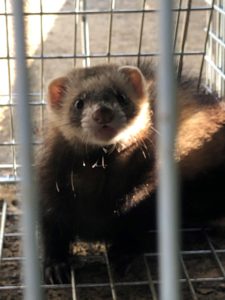
Mustelids:
Placement:
- Approximately one trap per 15ha
- On flat ground so the trap is stable and doesn’t rock
- Near a waterway, or along a fence line/retaining wall. They like to run between areas using ‘shelter’ rather than being in the open.
- Angle the trap so liquid from the lure exits the trap rather than pooling around and corroding the trap mechanism.
Lure:
- A whole, raw egg (also functions as a visual lure). When refreshing, throw it into the bushes nearby to attract mustelids to the area.
- Fish/salmon, meat scraps from dinner (raw or cooked)
- Possum or rabbit meat from recent catch
- Mayonnaise mixed with salmon oil (longer lasting lure)
- Rub a freshly caught possum or mustelid on the trap. The scent will attract mustelids.
Tips:
- Disturb the ground near the trap entrance by pulling out grass or roughing up leaves. Clear a 50cm path to the entrance with the heel of a boot to look like an animal’s path.
- Traps need to be serviced and tested often to ensure they will be activated by the weight of a mustelid. Check traps by using 80g of weighted rags. This will increase the life of a trap as opposed to dry firing. Oil the treadle occasionally.
- Keep traps clean of spider webs and other obstructions to create the illusion that the tunnel is frequented by other animals.
- Spray the trap with salmon spray to mask the human smell (also functions as a lure).
- Mustelids will be attracted to dead animals in a possum trap, so it can be worth setting a mustelid trap near a possum trap.
Rabbits:
It is best to shoot these pests. Alternatively, use a live trap with a trigger plate and vegetables as the lure with a trail leading into the trap. The smell of a rabbit who has urinated or left droppings can be enough to entice another into the trap.
As always, get in touch with me if you need specific advice, a visit, or more hardware. I enjoy hearing about what’s happening out there so good news stories are great too.
Happy trapping,
Lenny van Heugten
Pest Control Co-ordinator
Friends of Te Wairoa

